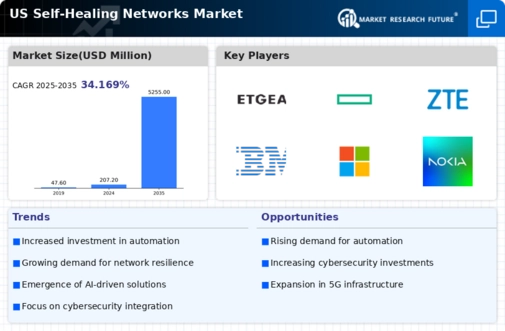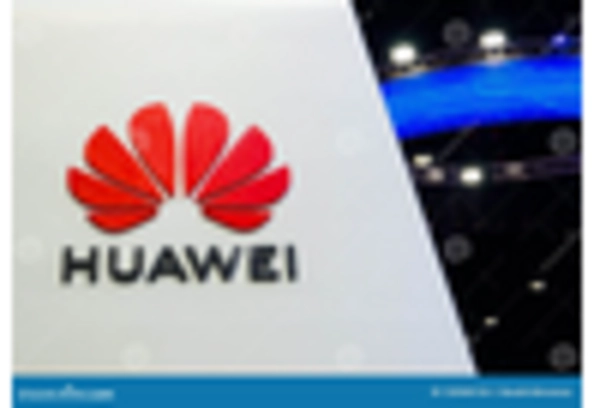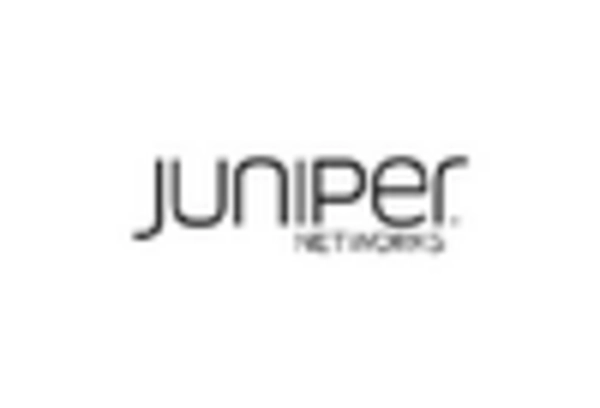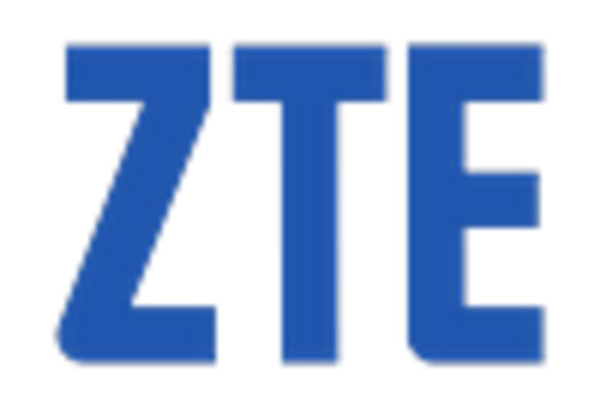The self healing-networks market is currently characterized by a dynamic competitive landscape, driven by the increasing demand for resilient and adaptive network solutions. Key players such as Cisco Systems (US), Juniper Networks (US), and IBM Corporation (US) are at the forefront, leveraging innovation and strategic partnerships to enhance their market positioning. Cisco Systems (US) focuses on integrating AI-driven analytics into its self healing solutions, aiming to improve network reliability and reduce downtime. Meanwhile, Juniper Networks (US) emphasizes its commitment to automation and cloud-native architectures, which are essential for modern network management. IBM Corporation (US) is also making strides by incorporating advanced machine learning algorithms into its offerings, thereby enhancing predictive maintenance capabilities. Collectively, these strategies not only bolster their competitive edge but also shape the overall market dynamics by setting higher standards for operational efficiency and customer satisfaction.
In terms of business tactics, companies are increasingly localizing manufacturing and optimizing supply chains to enhance responsiveness to market demands. The competitive structure of the self healing-networks market appears moderately fragmented, with several players vying for market share. However, the influence of major companies like Cisco Systems (US) and IBM Corporation (US) is substantial, as they set benchmarks for innovation and service delivery that smaller firms strive to meet.
In October 2025, Cisco Systems (US) announced a strategic partnership with a leading cloud service provider to enhance its self healing capabilities through integrated cloud solutions. This collaboration is expected to streamline network management processes and provide customers with more robust, scalable solutions. The strategic importance of this partnership lies in its potential to expand Cisco's market reach and reinforce its position as a leader in the self healing-networks domain.
In September 2025, Juniper Networks (US) launched a new AI-driven platform designed to automate network operations and enhance self healing functionalities. This platform is anticipated to significantly reduce operational costs for enterprises by minimizing manual interventions. The launch underscores Juniper's commitment to innovation and positions it favorably against competitors who may not yet offer such advanced solutions.
In August 2025, IBM Corporation (US) unveiled a new suite of self healing network tools that leverage quantum computing technologies. This development is poised to revolutionize the way networks are managed, offering unprecedented speed and efficiency in problem resolution. The strategic importance of this innovation cannot be overstated, as it places IBM at the cutting edge of technology in a rapidly evolving market.
As of November 2025, the self healing-networks market is witnessing trends that emphasize digitalization, sustainability, and the integration of AI technologies. Strategic alliances are increasingly shaping the competitive landscape, enabling companies to pool resources and expertise to deliver superior solutions. Looking ahead, it is likely that competitive differentiation will evolve, with a pronounced shift from price-based competition to a focus on innovation, technological advancement, and supply chain reliability. This evolution suggests that companies that prioritize these aspects will be better positioned to thrive in the future.

















Leave a Comment